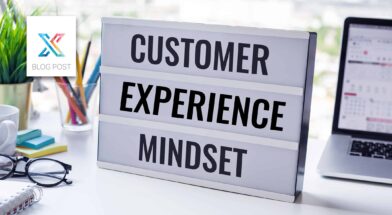Professional services firms continue to hear it loud and clear from their clients—concerns about responsiveness, scheduling delays, and general helpfulness. The root cause? Overextended technical teams struggling to keep up with client needs.
An increasingly popular and effective solution? Investing in a scalable Customer Success (CS) team.
A well-structured CS team doesn’t just take pressure off your technical staff—it ensures your clients stay informed, supported, and satisfied. However, building such a team isn’t a plug-and-play process. It requires thoughtful planning, strategic growth, and alignment with both your internal capacity and customer needs.
In this article, we’ll break down the maturation of Customer Success teams, the costs and temptations of specialization, and how to know when and how to evolve your CS function to better serve your clients and strengthen loyalty.
The Five Maturation Stages of a Customer Success Team
Building a CS team is a journey. Here’s how that evolution often unfolds:
1. Founder-Led Customer Success
Early on, founders are deeply involved in every client interaction. This fosters unmatched intimacy but isn’t scalable.
- Pros: Deep client insights, strong personal relationships.
- Cons: Founder burnout, unsustainable in the long term.
2. The Jack-of-All-Trades Team
As growth continues, CS is handled by a small team juggling onboarding, support, and success functions.
- Pros: Flexibility, diverse skills development.
- Cons: Burnout risk, lack of specialization, reactive client support.
3. Reactive Support + Proactive Success
CS begins separating from general support. Teams start engaging clients proactively—before problems arise.
- Pros: Increased trust, improved client satisfaction.
- Cons: Still limited bandwidth for strategic initiatives.
4. Dedicated Roles: Support + Onboarding + Success
At this stage, firms assign clear ownership to each CS function, resulting in stronger internal collaboration and better client experiences.
- Pros: Smoother onboarding, higher client retention, clarity of responsibilities.
- Cons: Increased complexity and need for coordination systems.
5. Mature Structure: Support + CS + Renewals + Professional Services
The CS team becomes a strategic engine, with specialized roles focused on every stage of the client journey.
- Pros: Strong client advocacy, high specialization, and measurable loyalty gains.
- Cons: Higher costs, risks of siloed teams without proper alignment.
The Temptation (and cost) of Specialization
As you scale, the allure of specialization grows. But without the proper foundation, it can create more problems than it solves. Here’s what to watch out for:
- It’s Expensive: More roles mean more salaries and overhead.
- Less Flexibility: Specialists can't pivot as easily.
- Increased Complexity: Coordination challenges multiply.
- Requires Infrastructure: Specialized teams need tools, processes, and communication systems.
- You Need Solid KPIs: Clear success metrics are essential for accountability.
- Risk of Silos: Without cross-functional collaboration, departments lose alignment.
- More Management Layers: You’ll need more leaders to manage more teams.
Savvy Tip: Specializing too early can magnify your operational challenges instead of solving them.
How to Know When You're Ready to Scale Your CS Team
Moving to the next stage of CS maturity isn’t about hitting a revenue number or headcount—it’s about strategic readiness. Ask yourself:
- What are our 1-year goals?
- How many clients will we onboard or retain?
- Would system upgrades help more than additional hires?
- Are we willing to trade flexibility for structured specialization?
Smart scaling ensures you maintain a high-quality, personalized client experience without overwhelming your teams.
Strategic Planning for CS Leaders
Building a CS team requires looking 12–18 months ahead. Here’s how to plan:
- Scenario Planning: Model different growth scenarios and their resource needs.
- Assess Team Capacity: Use an Employee Perception Analysis to understand morale and workload.
- Upgrade Systems First: Consider if new tools (e.g., CRM or CS platforms) can relieve pressure before hiring.
- Involve Stakeholders: Conduct empathy mapping to uncover internal and external friction points.
Savvy Tip: If the data doesn’t demand specialization yet, focus on refining systems and processes first.
Conclusion: Build for Lasting Client Success
A scalable Customer Success team isn’t just a safety net—it’s a growth catalyst. It bridges the gap between technical teams and clients, ensures clear communication, strengthens relationships, and protects the client experience as you scale.
Whether you’re just beginning or maturing your CS model, remember to prioritize proactive communication, sustainable operations, and client outcomes. That’s how you boost client satisfaction, build loyalty, and achieve lasting success.





